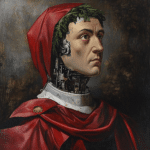Vermont-based artist, Sam Kerson, faced a legal setback when his attempt to compel a law school to showcase a mural, criticized by some as having “cartoonish” and “racist” portrayals of enslaved Black individuals, was rejected.
Kerson, a 76-year-old multifaceted artist passionate about social justice, initiated a lawsuit against Vermont Law and Graduate School located in South Royalton, Vermont. This was in response to the school covering his artwork with fabric panels due to negative feedback over its depiction of enslaved Africans. Critics argued that the artwork represented Africans in an overly “animalistic manner” with exaggerated features.
Kerson’s legal representatives contended that hiding the mural contravened a 1990 statute that allows artists to defend their creations from damage or alteration. However, on August 18, a trio of judges from the United States Court of Appeals for the Second Circuit ruled in favour of the institution, asserting that merely covering the mural doesn’t equate to its alteration or destruction.
Steven Hyman, representing Kerson, labelled the judgment an error and expressed to CNN that the criticism is a manifestation of the prevalent “cancel culture.” They are now contemplating elevating the case to the Supreme Court.
Mural’s Background
The mural titled, “The Underground Railroad, Vermont and the Fugitive Slave”, has long been a point of contention among the school’s students and the wider community.
Commissioned in 1993, Kerson’s mural spans two expansive panels in a campus conference room. The initial panel showcases the horrors of slavery, culminating in a slave uprising. The subsequent one presents abolitionists like Harriet Beecher Stowe, John Brown, and Harriet Tubman, accompanied by Vermont residents aiding former slaves.
Kerson emphasized the mural’s focus on liberation to CNN. Despite his sentiment, the artwork has faced continuous critique over its portrayal of enslaved individuals for over twenty years. Many have dubbed the representations as reminiscent of “Sambo” characters.
Ongoing Controversy
The Vermont Law and Graduate School tried to address the controversy in 2014 by affixing a plaque elucidating the mural’s intent. Yet, opposition intensified in 2020 amidst the national debate over racially insensitive symbols.
Offered an opportunity to take down his mural, Kerson faced challenges since it was painted directly on the wall. In the end, the school chose to obscure the mural with fabric panels, avoiding any damage.
In disagreement with the school’s decision, Kerson pursued legal action. Despite relocating to Canada, Kerson remains committed to having his artwork showcased. He believes the mural loses its essence when hidden, likening it to being painted over.
Justin Barnard, legal counsel for the school, clarified there was no ill will towards Kerson. He stressed the importance of listening to and valuing the opinions of those depicted in artworks.
Art, throughout history, has often been a reflection of societal values and shifts. While Kerson’s mural was rooted in the intention of highlighting the struggles and triumphs within the context of slavery, the reactions it evokes in today’s society showcase our evolving understanding and sensitivity towards representation. As the debate continues, the key lies in fostering dialogue and understanding, ensuring that art remains both a mirror of our past and a beacon for our future.



